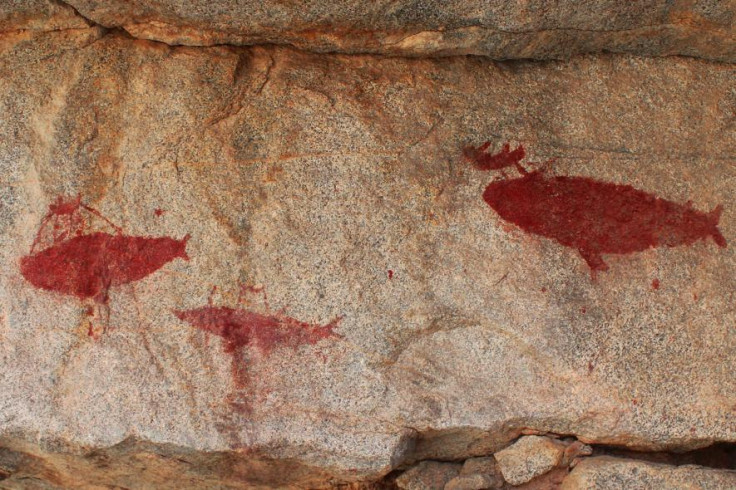Ancient Chilean rock paintings of whale hunting link the ocean to the desert
The 1,500-year-old drawings were made by hunter-gatherers who lived in the Atacama Desert.

Archaeologists are gaining new insight into how ancient Chileans engaged in marine hunting, thanks to rock paintings discovered in the Atacama Desert. The journal Antiquity published a study, which looks to these prehistoric drawings to understand the importance of big game fishing to hunter gatherers.
The 1,500-year-old drawings, which were made using iron-oxide, depict people using rafts at sea and killing whales with makeshift harpoons. Some depictions also feature the hunting of sharks, sea-lions and swordfish.
"These red pictographs comprise hundreds of hunting scenes and portray a complex marine hunter-gatherer society," the paper's author, Benjamín Ballester notes.
Most of the rock art found in this region was first discovered in El Medano, a valley that separates the sea from the desert. However, most of the art referred to in the study is from a site called Izcuña, several miles from El Medano.
Here archaeologists have documented 328 paintings and while many of them depict terrestrial animals, the rarity of the marine life drawings is what makes them more interesting.
"Overall, hunting is represented as a specialised, solitary, individual practice, led by a selected few people," Ballester mentions.
"The artistic expression of this body of ancestral and complex knowledge occurs only in specific places. Although the pictographs are evident in a few rock-shelters near the shore, they occur far more frequently in ravines several kilometers from the ocean.
"The painters portrayed a marine activity in a desert setting, in a conscious act of linking the ocean to the desert via rock art," he adds.






















